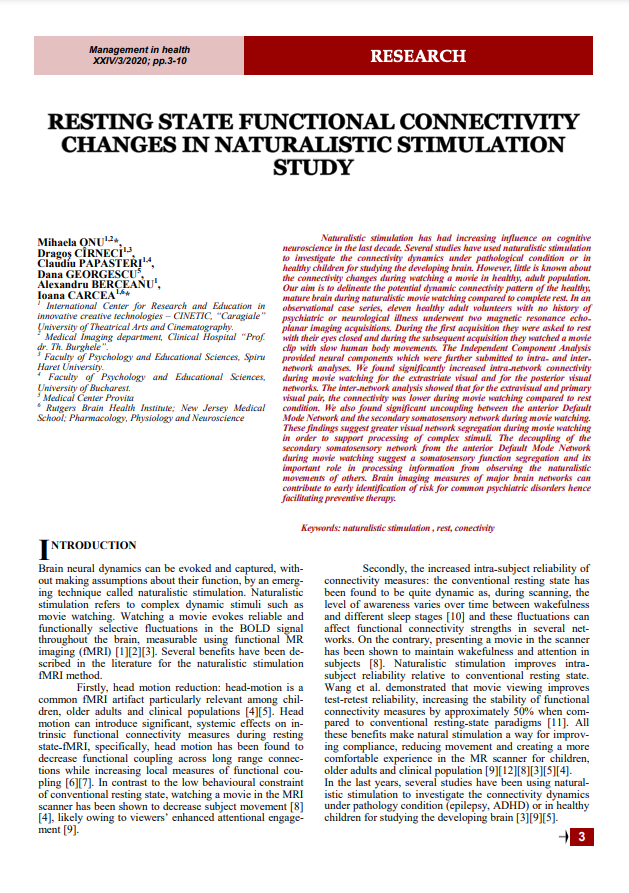Abstract
Naturalistic stimulation has had increasing influence on cognitive neuroscience in the last decade. Several studies have used naturalistic stimulation to investigate the connectivity dynamics under pathological condition or in healthy children for studying the developing brain. However, little is known about the connectivity changes during watching a movie in healthy, adult population. Our aim is to delineate the potential dynamic connectivity pattern of the healthy, mature brain during naturalistic movie watching compared to complete rest. In an observational case series, eleven healthy adult volunteers with no history of psychiatric or neurological illness underwent two magnetic resonance echoplanar imaging acquisitions. During the first acquisition they were asked to rest with their eyes closed and during the subsequent acquisition they watched a movie clip with slow human body movements. The Independent Component Analysis provided neural components which were further submitted to intra- and internetwork analyses. We found significantly increased intra-network connectivity during movie watching for the extrastriate visual and for the posterior visual networks. The inter-network analysis showed that for the extravisual and primary visual pair, the connectivity was lower during movie watching compared to rest condition. We also found significant uncoupling between the anterior Default Mode Network and the secondary somatosensory network during movie watching. These findings suggest greater visual network segregation during movie watching in order to support processing of complex stimuli. The decoupling of the secondary somatosensory network from the anterior Default Mode Network during movie watching suggest a somatosensory function segregation and its important role in processing information from observing the naturalistic movements of others. Brain imaging measures of major brain networks can contribute to early identification of risk for common psychiatric disorders hence facilitating preventive therapy.

